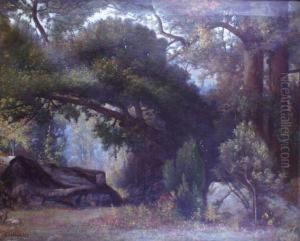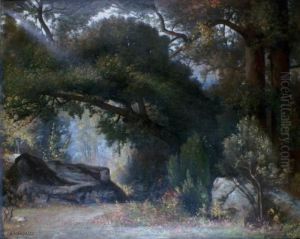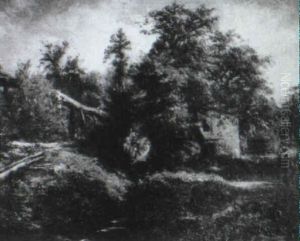Jules Thepaut Paintings
Jules Thepaut was a French painter, born in 1879 in Morlaix, Brittany, and passed away in 1956. His artistic journey is emblematic of the regionalist movement in French art, which sought to capture the unique landscapes, traditions, and cultures of France's various regions. Thepaut's work is particularly noted for its depiction of the Brittany region, its rugged coastlines, historic towns, and its vibrant folk traditions. His art is characterized by a strong use of color and dynamic compositions, which bring the Breton landscape and its people to life.
Educated at the École des Beaux-Arts in Paris, Thepaut was deeply influenced by the Symbolist movement and the post-Impressionists, which is evident in his approach to color and form. He was also inspired by the Pont-Aven School, a group of artists centered around the small Breton town of Pont-Aven, who were known for their bold, experimental use of color and synthesis of form. Thepaut, however, developed his own unique style, blending traditional techniques with his innovative use of color and light to capture the essence of Brittany.
Throughout his career, Thepaut exhibited his work in various salons and galleries, both in France and internationally. His paintings were well-received, earning him recognition and awards. Despite the acclaim, Thepaut remained deeply connected to Brittany, often returning to his native region for inspiration. His works are a testament to his love and dedication to Brittany, portraying not just its physical beauty but also the spirit of its people.
Jules Thepaut's legacy lives on through his contributions to French regionalist painting. His works are preserved in several French museums, including the Musée d'Orsay and the Musée des Beaux-Arts de Quimper. Through his vivid landscapes and scenes of daily life in Brittany, Thepaut has left an indelible mark on the art world, celebrating the unique cultural identity of his beloved region.


